In Singapore's industrial fringe, migrant workers form unlikely bonds with stray animals
Migrant workers partner animal welfare volunteers to feed and maintain the health of more than 200 stray cats and dogs.
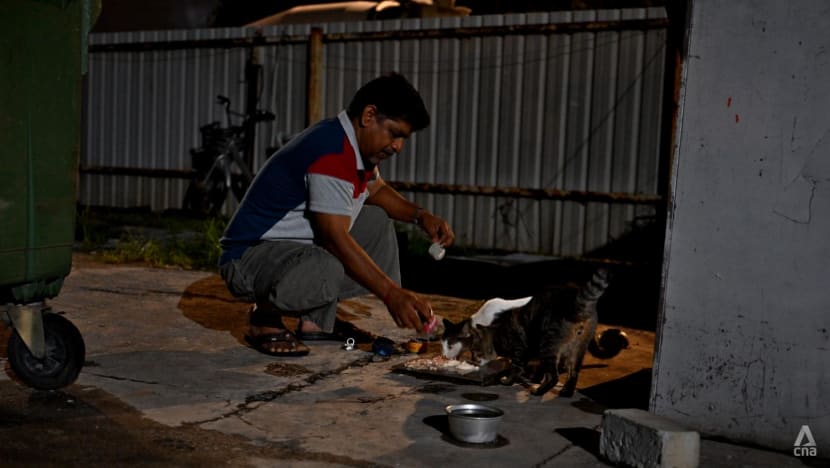
Uncle Ramesh feeds two stray cats with food provided by The Stray Affairs at an industrial estate in Singapore on Dec 2, 2023. (Photo: CNA/Jeremy Long)

This audio is generated by an AI tool.
SINGAPORE: Every Saturday night, in a far-flung industrial corner of Singapore, a crew of volunteers brings food to the stray animals that shelter at factories in the area.
As the feeders approach, cats and dogs emerge from the shadows and wait expectantly at the factory gates. The six core members of local animal welfare group The Stray Affairs have become a familiar sight.
But the other six days of the week, it is migrant workers living and working in the area who keep the animals fed and healthy.
In this industrial fringe where migrant workers are thought to be merely transient, they have fostered unlikely bonds with the stray animals by becoming their caretakers.
“They serve as our eyes and ears on the street,” said The Stray Affairs member Daryl Mah, 25. “Most of them, they’re glad to do it because they actually do care for the animals.”
This industrial estate is home to about 150 dogs and 100 cats. At night, the animals roam around the factories’ courtyards, among wooden pallets and heavy machinery, in easy coexistence with the workers.
About 30 to 40 workers care for the animals. During the week, they dispense not just food provided by the volunteers but also medicines, as needed, and take note of any injuries, illnesses and disappearances.
One of The Stray Affairs’ closest partners is a dormitory manager known as Uncle Ramesh. The worker from Tamil Nadu, who is in his 50s, has been in Singapore for more than 20 years.
Uncle Ramesh fosters cats, and a grandfatherly twinkle appears in his eye when he talks about them.
He is so close to the animals that when one of his kittens was recently taken in by a volunteer to be monitored for a viral infection, he followed her progress closely, getting updates through text messages.
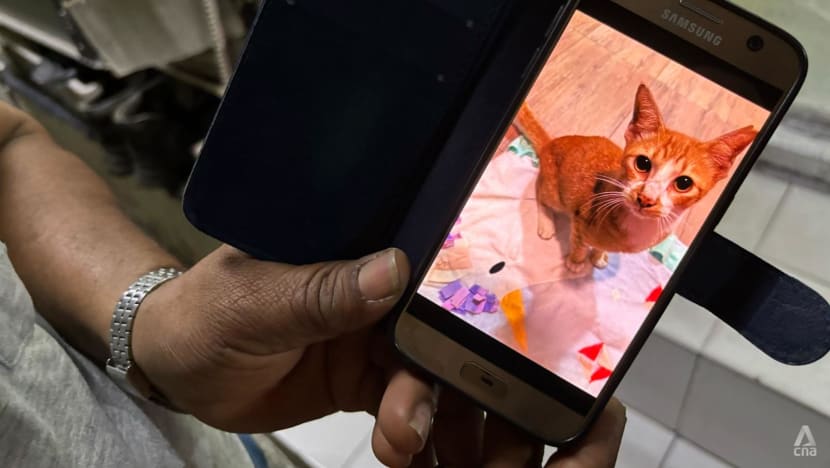
On Saturday nights, after the factories and workers have wound down for the day, the volunteers arrive with 60kg to 80kg of food for the animals.
On the day CNA visits, The Stray Affairs food coordinator Ng Weiling has cooked 30kg of donated beef and chicken that was nearing expiry. Volunteers shred the boiled meat by hand and mix it with other foods like hard-boiled eggs.
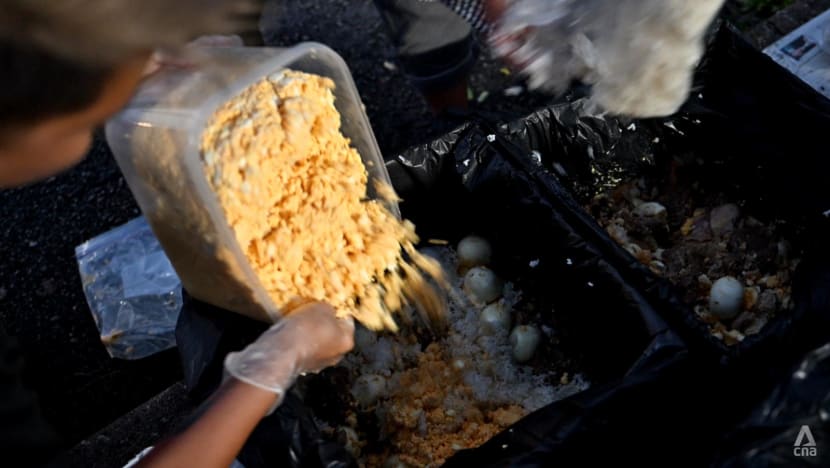
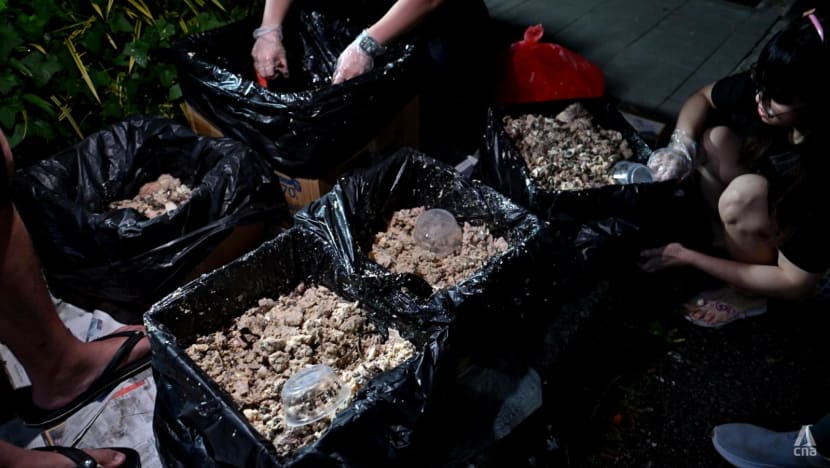
The food is split among five or six drivers, each setting off on a route that goes past around 10 feeding stops.
At each stop, the volunteers scoop generous helpings into plastic bowls. When the animals come out to eat, the volunteers take the opportunity to make sure all are alive and well.
Then they touch base with the migrant workers. At the lowest level of commitment, volunteers pass kibble and canned pet food to the workers and ask them to take a few minutes each day to set down some food for the animals.
But some workers do more, even sharing food at their own expense.
Another migrant worker, 38-year-old Paliani, takes care of two Singapore Specials named Spotty and Manja Girl. Every night, even before he and his colleagues have eaten dinner, they set aside rice to mix with the dogs’ food.
The two dogs used to belong to a pack of five. Mr Paliani, who arrived from Tamil Nadu in 2014, has seen the pack through some hard times. That included a cancer diagnosis for one of the dogs, who eventually died.
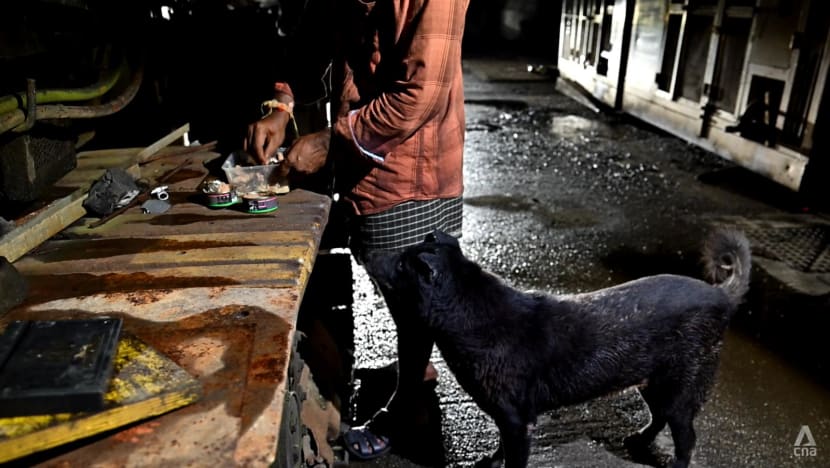
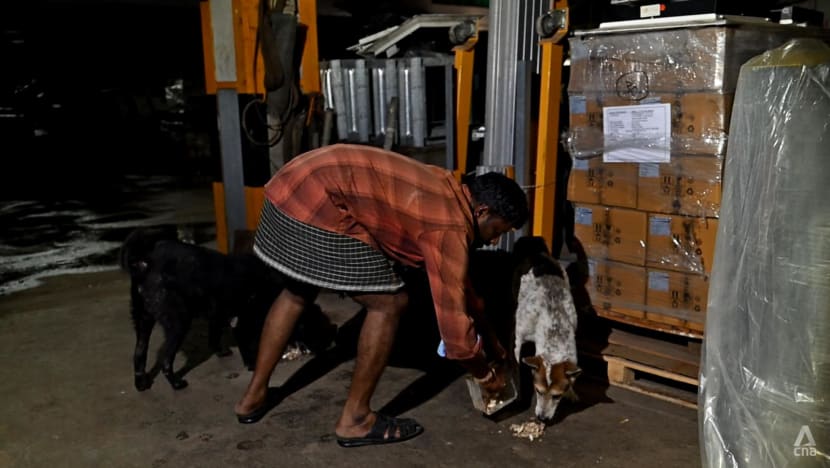
During medical emergencies, the trust between an animal and its caretaker becomes crucial. As the dog that died of cancer trusted Mr Paliani, he was instrumental in getting it to cooperate when the volunteers needed to take it to the vet.
Mr Mah recalled the first time the volunteers tried to trap a stray dog for a medical exam. They were “prepared to go for war”, armed with cages and a battle plan.
“The dog was really skittish, it was afraid to come near us,” said Mr Mah. “It took a whole half an hour before a migrant worker saw what we were doing, and then he just called the dog.
“The dog came to him and he held the dog for us. And then we were able to go in and put a leash and put the dog in the carrier.”
It was an eye-opener for the volunteers. “We didn’t have to have a whole trapping team. All it took was that trust the migrant worker has with the animal.”
Mr Mah started volunteering about five years ago as a school requirement, but only found his love for animals along the way.
Last year, he and five other volunteer feeders set up The Stray Affairs to serve the animal population in industrial areas. These tend to be overlooked compared to community animals in more accessible, residential areas, he said.
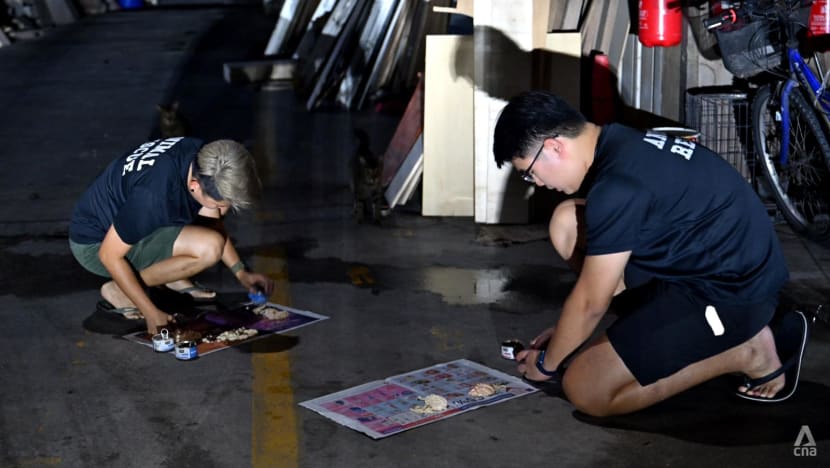
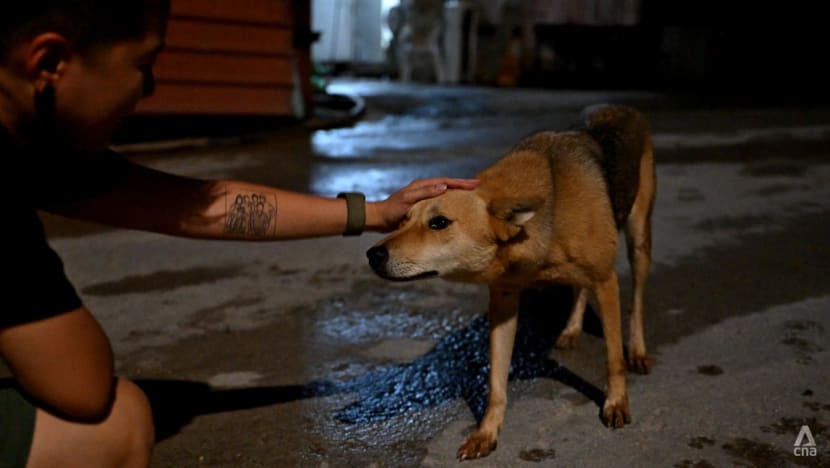
CNA is withholding the location of the industrial estate at the request of The Stray Affairs, for the animals’ safety.
The group previously had difficulties when a new volunteer snuck back to a factory after a feeding session to take a dog that she liked.
Some of the dogs are licensed to factories and have designated caregivers. Removing them without permission is a form of theft, Mr Mah pointed out.
The streets can be unsafe, and some cases – such as an animal that is sick or being bullied by other animals – warrant rehoming. But people also tend to overlook what the stray dogs and cats lose when they are rehomed, he said.
Though the animals may not have collars and beds, they have strong bonds to each other, to the migrant workers who are their caretakers, and to the environment they call home.
“(The dogs) socialise with one another, they have packs, they have workers to look after them,” he said. “They have emotional attachment to the workers.”

















